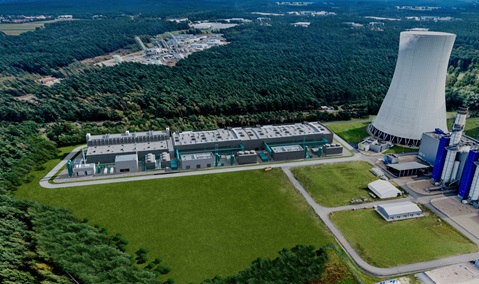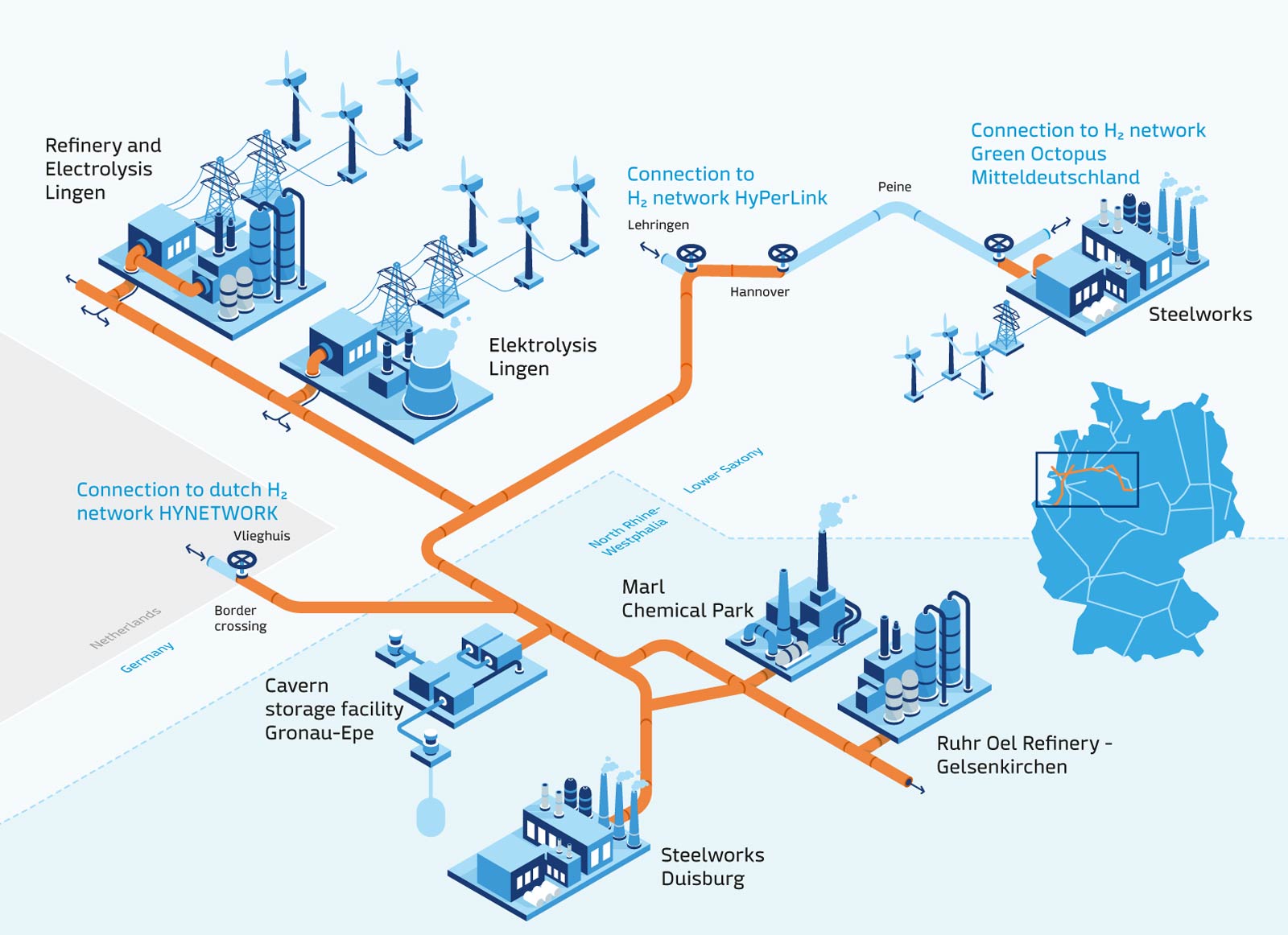Hydrogen
How RWE is actively helping to shape the age of hydrogen.

The project at a glance
As part of the GET H2 Nukleus project, RWE is planning to build an electrolysis capacity of 300 megawatts (MW) on the site of the Emsland gas-fired power plant in three expansion stages by 2027. The first 100 MW of electrolysis capacity is scheduled to go into operation in 2025. The aim of the Nukleus project is the large-scale, commercial production of green hydrogen, which will be supplied to industrial customers.
RWE’s 300-MW electrolyser in Lingen is a central element of the joint project GET H2 Nukleus, in which RWE is working with partners to link up the production of green hydrogen with industrial customers – initially in the states of Lower Saxony and North Rhine-Westphalia, later also in the Netherlands.

Green hydrogen for industry
The electrolyser in Lingen is designed to split water into its components hydrogen and oxygen, primarily using offshore wind power. As no CO2 is released during this process, the hydrogen produced is considered green. Green hydrogen can make a significant contribution to reducing CO2 emissions far beyond the electricity sector. For the transport sector and energy-intensive industries such as steel, and also as a raw material for refineries and the chemical industry, green hydrogen is a decisive step towards climate neutrality.
Hydrogen production per hour
At full load, the 300-MW plant will be able to produce 5.6 tonnes of green hydrogen per hour. To put this into perspective, this is theoretically enough to produce 77 tonnes of steel through direct reduction.
Important project of common European interest (IPCEI)
On 15 July 2024, RWE received a funding commitment totalling 492 million euros from the German federal government and the state of Lower Saxony to implement the project. RWE is planning to invest a medium three-digit million-euro amount for the construction of the electrolyser for the Nukleus.
According to the EU Commission’s notification of February 2024, the GET H2 Nukleus belongs to the “Important Projects of Common European Interest” (IPCEI). This categorisation made financial support by national funding bodies possible.
Funding partner
The construction of the 300-MW electrolyser as part of the GET H2 Nukleus is funded by:

